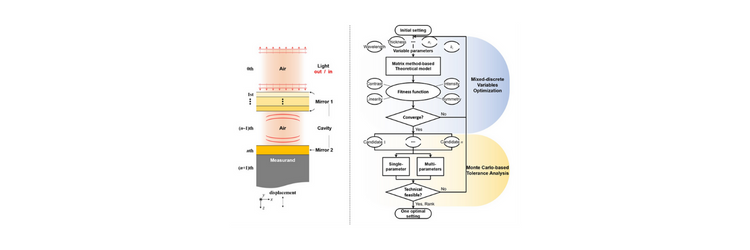Inverse Design and Optical Cavity-based Displacement Transducer
Displacement often serves as the intermediate physical quantity of various sensors in terms of their testability. Most sensors transform the quantity to be measured, including force, deformation, acceleration, angle, etc., into detectable displacement, completing the measurement or perception. A displacement sensing unit with high accuracy is important for precision sensing and advanced manufacturing and plays an essential role in basic research and industrial production.
Optical displacement sensors such as the Fabry-Perot cavity-based sensor are widely used due to their high optical finesse and potential for miniaturization. They feature higher light-displacement sensitivity, optical contrast, and larger linear range. Although a series of theories and models can predict the optical response, the inverse problem, e.g., the design of an optical cavity with a designated response, was a challenge because of the unaffordable cost of computation.
Advances in algorithm development and increased computing power are enabling inverse designs of a mount of nanophotonic structures with desired functional characteristics. The inverse design of the displacement-sensitive cavity is a typical multi-objective optimization problem. The problem of how to realize high sensitivity, linearity, and technical feasibility remains open.
The researchers combined the characteristic matrix method and mixed-discrete variables algorithm-enabled inverse design to establish a path toward an arbitrary response of an optical cavity-based displacement transducer. A modified mixed-discrete genetic algorithm is used to optimize the variable parameters of the optical cavity by constructing a self-built fitness function. The fitness function contains the evaluation factors of optical contrast, intensity, linearity, and symmetry and is moderately adjusted. Single-layer and multi-layer systems are both considered, and the optimal results pass through tolerance analysis to maintain high process feasibility.

